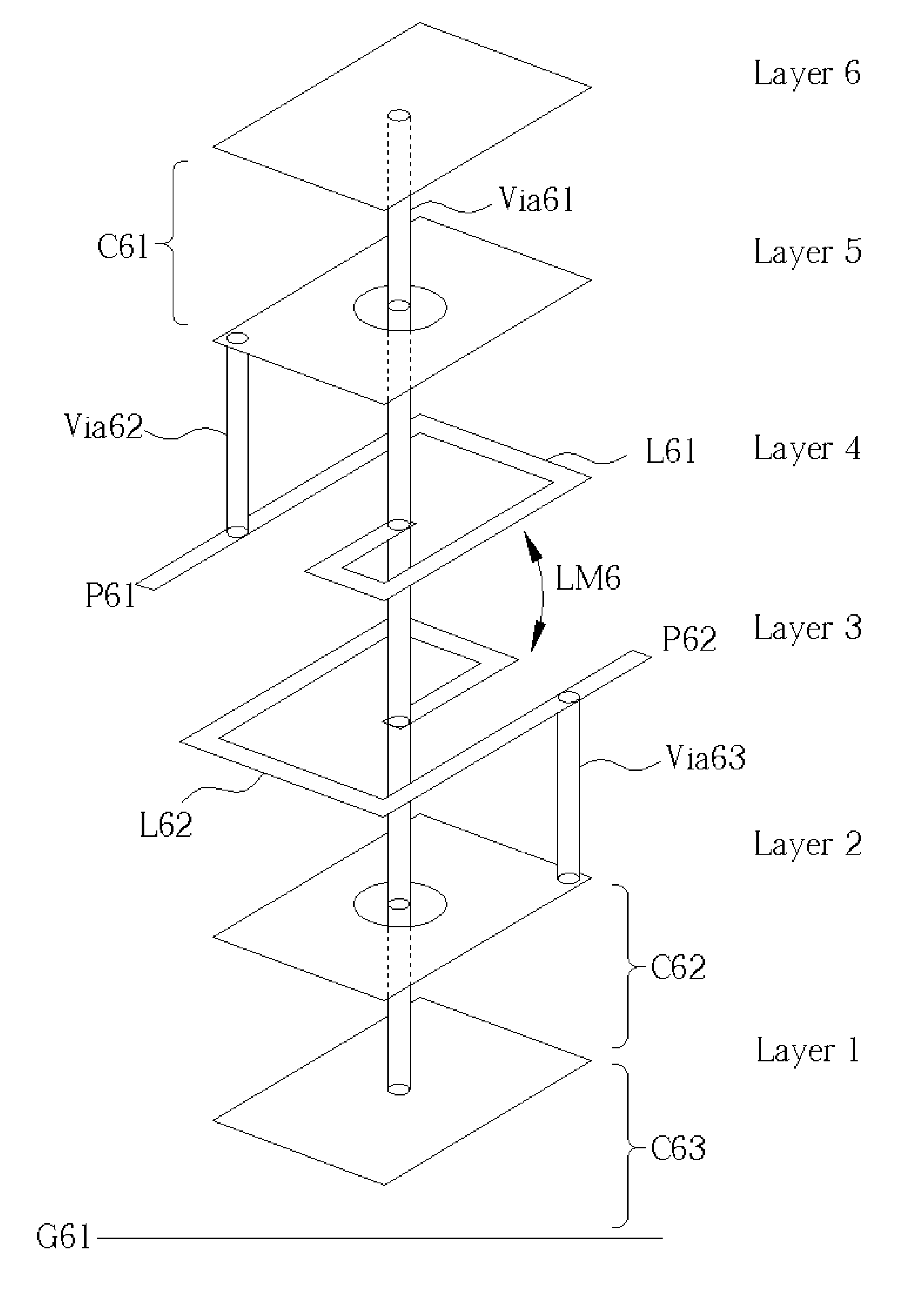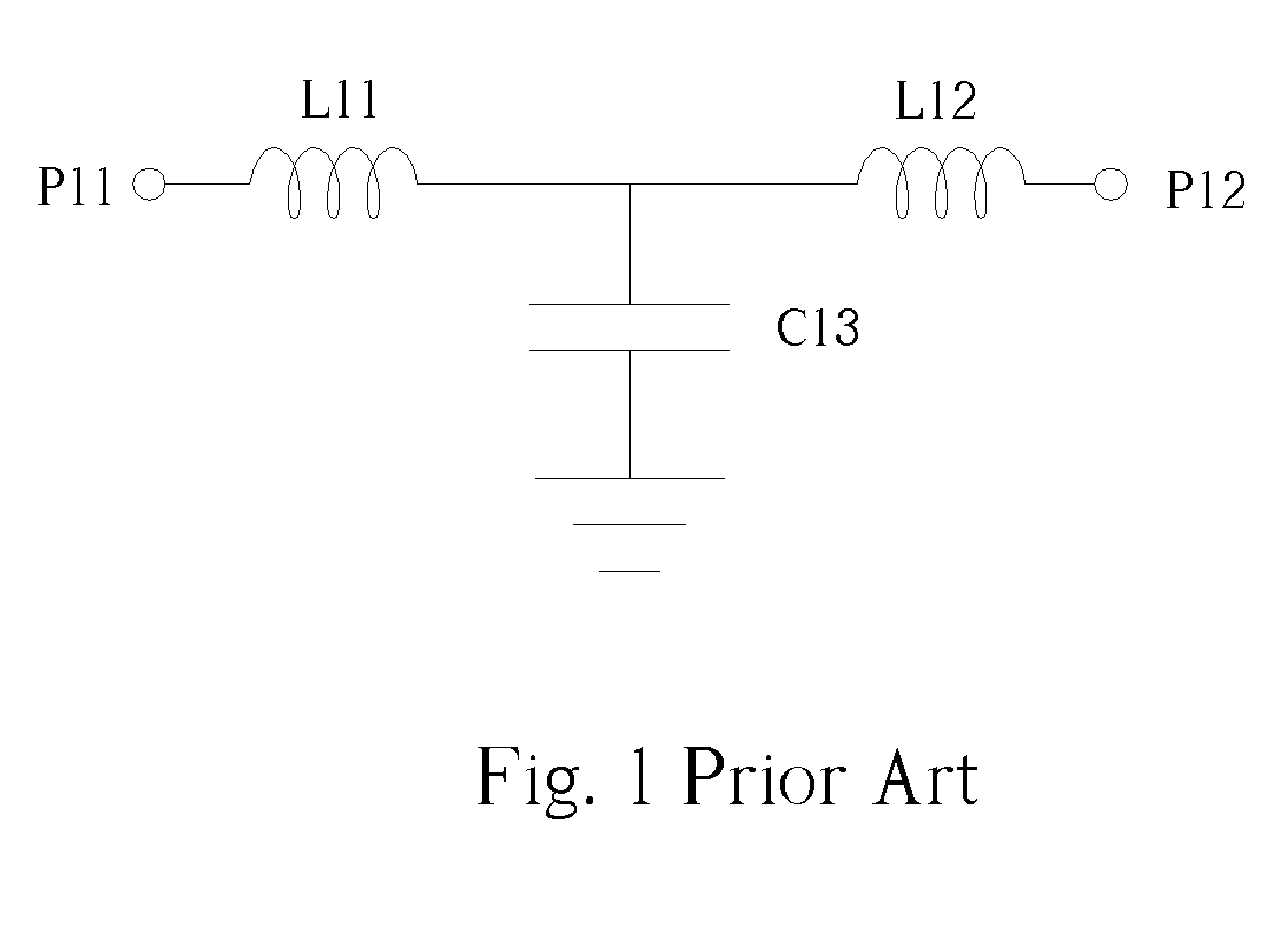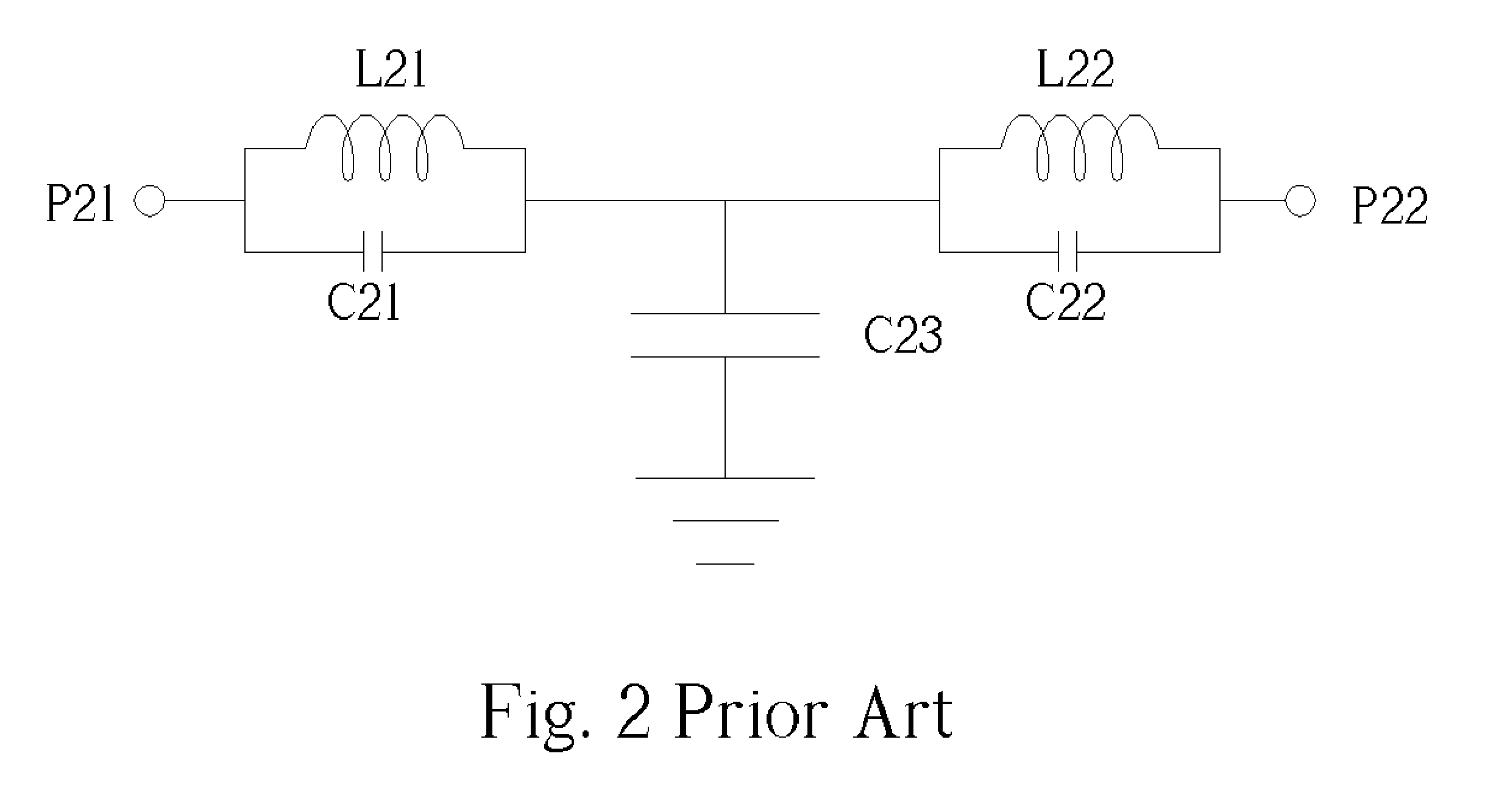Lumped-element low-pass filter in multi-layered substrate
a low-pass filter and multi-layer technology, applied in the field of low-pass filter performance of low-pass filter, can solve the problems of large number of circuit elements, and inability to meet the requirements of high-frequency circuit design, so as to improve the rejection effect, reduce the cost of manufacturing, and save circuit area
- Summary
- Abstract
- Description
- Claims
- Application Information
AI Technical Summary
Benefits of technology
Problems solved by technology
Method used
Image
Examples
first embodiment
[0023] It is known that the mutual inductance relates to the distance and geometrical relations between the two inductors. Therefore, it is very applicable to implement the present invention in a 3-dimensional structure such as a multi-layered substrate. Based on the aforementioned circuit model shown in FIG. 4, a novel lumped-element low-pass filter with good stopband rejection may be realized in a very small area. Please refer to FIG. 6. FIG. 6 shows the present invention realized in a multi-layered substrate with a bottom ground plane G61. The filter includes inductors L61 and L62, capacitors C61, C62, and C63, and vias Via61, Via62, and Via63 penetrating the substrate and connecting different layers. Inductors L61 and L62 are realized with rectangular conductive spirals on layer 4 and layer 3 respectively. Note that the orientations of inductors L61 and L62 are different, such that a negative mutual inductance LM6 is established between inductors L61 and L62 with this arrangemen...
second embodiment
[0024]FIG. 8 shows the present invention realized in a multi-layered substrate with both a top ground plane G82 and a bottom ground plane G81. FIG. 8 illustrates inductors L81 and L82, capacitors C81, C82, and C83, and vias Via81, Via82, and Via83 penetrating the substrate and connecting different layers. The inductors L81 and L82 are realized by circular conductive spirals on layer 4 and layer 3 respectively. Note that the orientations of the inductors L81 and L82 are different. A negative mutual inductance LM8 is established between the inductors L81 and L82 with this arrangement, and it may achieve a designed value by appropriately adjusting the shapes of L81 and L82, or by selection of the distance between layer 3 and layer 4. The inductor L82 is electrically connected to the inductor L81 in series through the via Via81 penetrating the substrate. The capacitor C81 comprises two plates formed on layer 5 and layer 6. The plate formed on layer 5 is connected to one end of the induc...
third embodiment
[0025] Please refer to FIG. 9. FIG. 9 is the present invention realized in a multi-layered substrate with a bottom ground plane G91. FIG. 9 illustrates inductors L91 and L92, capacitors C91, C92, and C93, and vias Via91, Via92, and Via93 penetrating the substrate and connecting different layers. Inductors L91 and L92 are realized by rectangular conductive spirals on layer 4 and layer 3 respectively. The orientations of inductors L91 and L92 are different so that a negative mutual inductance LM9 is established between inductors L91 and L92 with this arrangement. The inductor L92 is electrically connected to the inductor L91 in series through the via Via91. The capacitor C91 comprises two plates formed on layer 5 and layer 6. The plate formed on layer 6 is connected to one end of the inductor L91 through the via Via92 and the plate formed on layer 5 is connected to another end of the inductor L91 through the via Via91. That is, the capacitor C91 is shunt-connected to the inductor L91 ...
PUM
 Login to View More
Login to View More Abstract
Description
Claims
Application Information
 Login to View More
Login to View More - R&D
- Intellectual Property
- Life Sciences
- Materials
- Tech Scout
- Unparalleled Data Quality
- Higher Quality Content
- 60% Fewer Hallucinations
Browse by: Latest US Patents, China's latest patents, Technical Efficacy Thesaurus, Application Domain, Technology Topic, Popular Technical Reports.
© 2025 PatSnap. All rights reserved.Legal|Privacy policy|Modern Slavery Act Transparency Statement|Sitemap|About US| Contact US: help@patsnap.com



